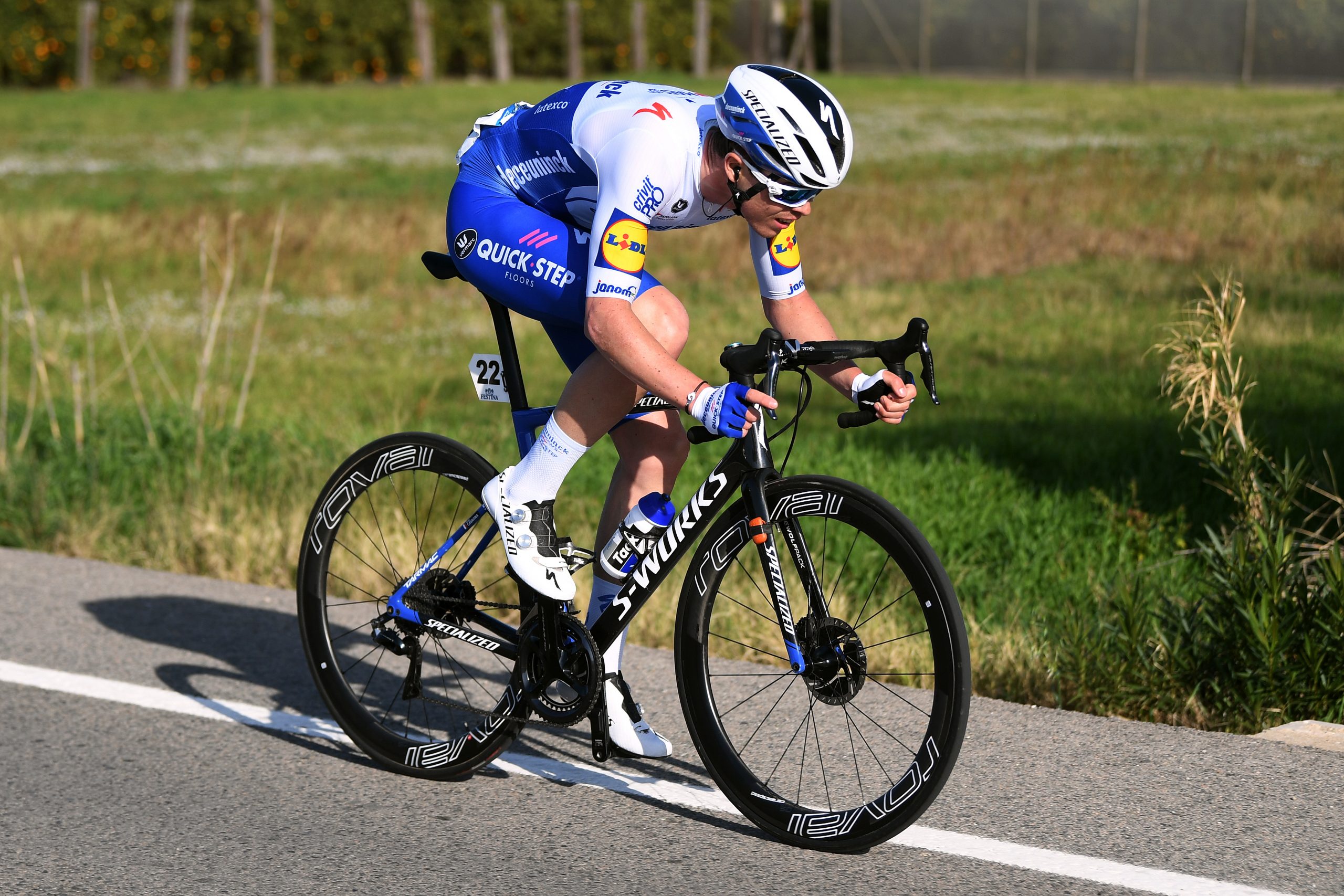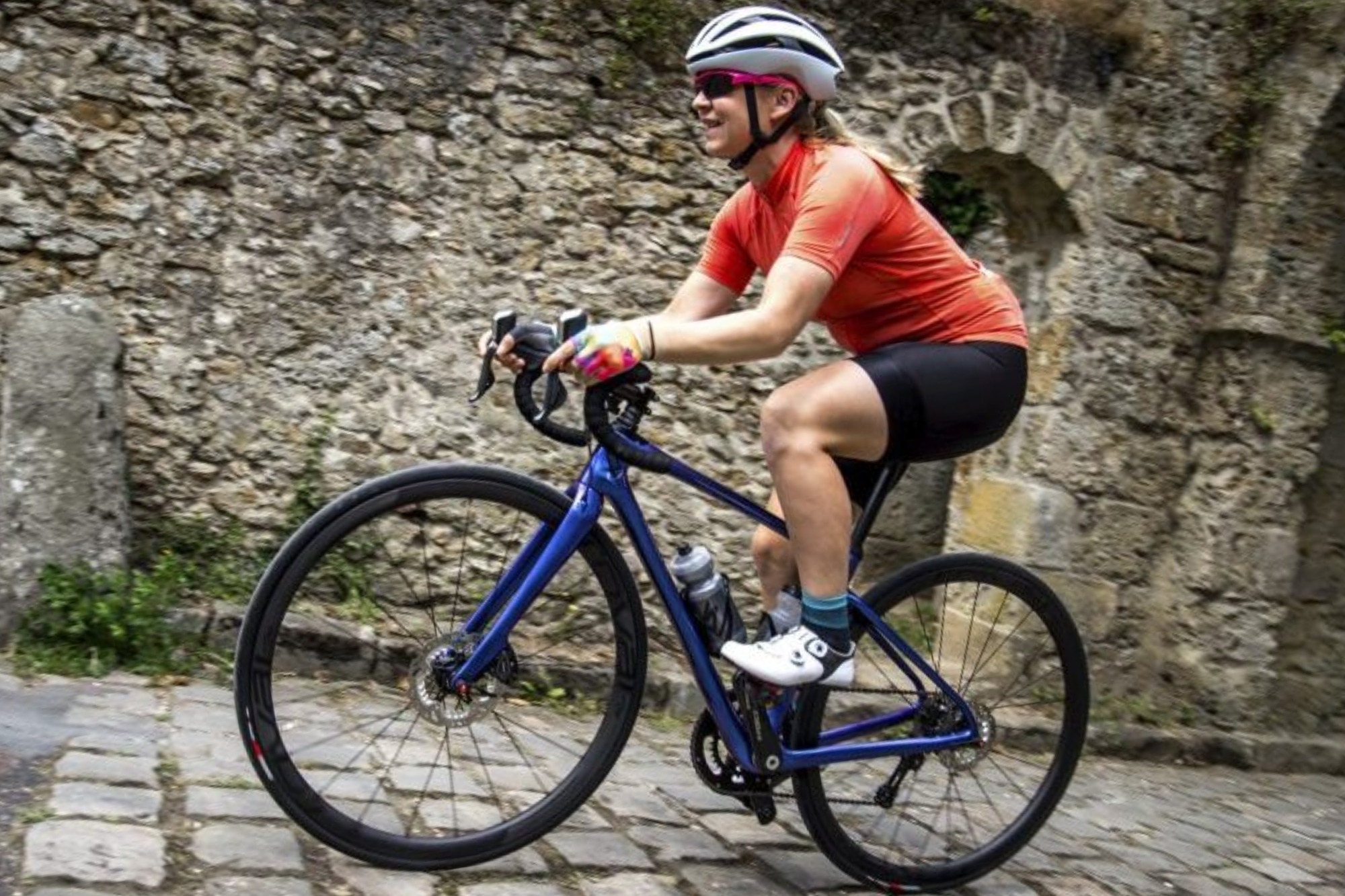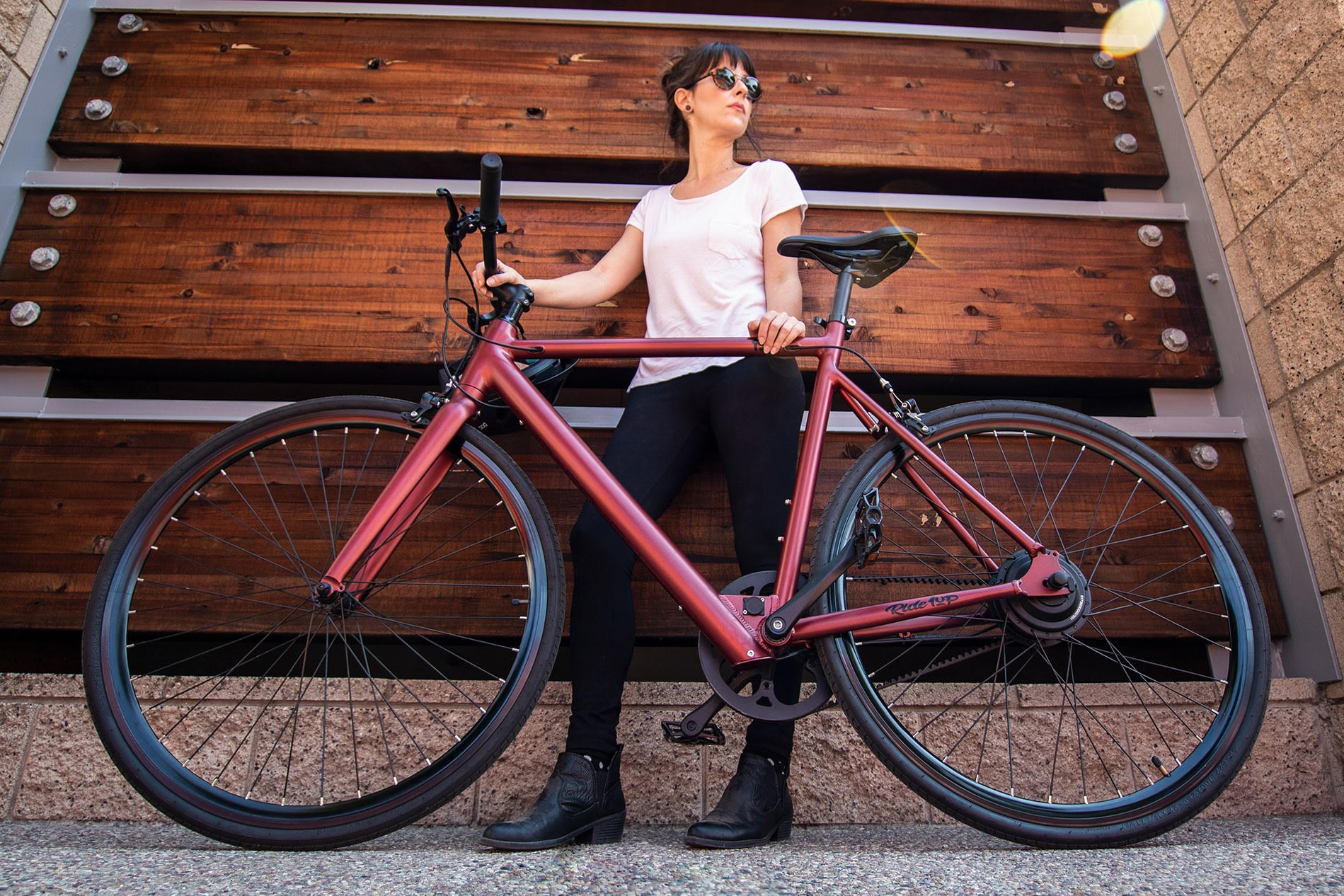Do you need a saddle with a cutout?
Specialized shares the science behind comfort for your behind.


Promotional feature with Specialized.
If you’ve ever experienced saddle discomfort – be it numbness or any pain – you are certainly not alone. But with people coming in such wonderfully different shapes and sizes, there’s no one answer that will suit everyone.
Fortunately, there is a huge variety of saddle designs, meaning that there will be one out there that you get on with. But on the flipside, the sheer number of different styles can be quite bewildering and can make it difficult to work out which saddle really is the one for you.
To help cut through the noise – and to provide a clear explanation of the differences and design principles between this panoply of perches – we’ve partnered with Specialized, a leader in saddle design.

Cementing this reputation is Specialized’s Body Geometry design process. This data driven approach applies scientific analysis and testing validated through the 100,000 of bike fit sessions allows Specialized to bring the right saddle solution to market.
We’ll take you through a range of saddle issues often experienced and what design elements provide the best solutions to those problems. Hopefully, by the end, you will not only know whether you could benefit from a saddle with a cutout, but will also have a broader understanding of what type of saddle is most likely to suit you.
How to determine the saddle you need

The most accurate way of determining what type of saddle is right for you is through the same bikefit pressure mapping that Specialized used to design its saddles in the first place. But don’t be disheartened if you don’t have access to a shop with this technology, it’s perfectly possible to determine which saddle is right for you from the comfort of your own home.
A saddle needs to be the correct width in order to support you in the right areas. Fortunately, Specialized has launched an online tool, available here, which guides you through the process which can easily be done at home. In addition to that, a little self-reflection is needed on what position you assume on the bike and exactly what form any discomfort you experience takes – we’ll take you through what you need to consider.
Bike position

Riding in an aggressive position, with a low front end and a big drop from your saddle to your handlebars, has the effect of rotating your hips forward and can put a lot of pressure on your soft tissue areas. Not only does this have the potential to be painful, but it can also have the effect of reducing blood flow – which is what leads to feelings of numbness.
Combating this takes a two-pronged attack. Going for a saddle with a shorter nose essentially removes the part of the saddle which gets in the way when you are low at the front. While a large central cutout helps to relieve pressure on the perineum area, which aids blood flow.
It is for this reason that the Specialized Power saddle is so popular amongst amateur riders and Specialized sponsored World Tour pros alike.

Other people who ride in more upright position with the handlebars higher up – and those people who prefer to move around on the saddle and don’t like being locked in just the one position – would, on the other hand, benefit from a saddle with a longer nose.
If that sums up your riding position, but you nevertheless still stuffer from problems of numbness, a long-nosed saddle with a central cutout would likely be the best balance of your needs.
Is your current saddle causing you any discomfort?

Although an unpleasant experience, any saddle discomfort you’re currently experiencing can at least inform what type of saddle would suit you rather better.
If you are feeling pain through your sit bones after a few hours riding, this is an indication that they are not being supported properly and you could benefit from a wider saddle.
Whereas, if you are experiencing lower back pain, this could be a sign that you might benefit from a saddle with a bit of kickback. With the saddle scooping upwards at the back, this provides something for you to push against when you're pedalling, so you’re not having to support your back by tensing your glutes.
And, as we touched on before, if you are experiencing any numbness this is a sign that your current saddle is imparting too much pressure on sensitive areas. This could be a sign that you need a saddle with a cutout and – depending on your riding style – a shorter nose could help too. As we’ll touch on in the next section, Specialized’s soft “Mimic” insert would also provide similar pressure relief, but without the presence of a cutout.
Finally, it’s vitally important that the saddle is the correct width, so that these design elements line up properly with where they should, and thereby provide their optimal benefits.
Female-specific saddle considerations

Women’s soft tissues come in a much greater variety of presentations than men’s, which can make finding the right saddle a little more difficult. But by no means is it impossible — and there are many options out there which can really help.
The Power saddle was developed with Evelyn Stevens, and was originally designed to be a women’s saddle, with the large central cutout minimising pressure on the nether regions. It just so happened that men really liked it too, which is why it is marketed as unisex.
But Specialized is not one to rest on its laurels. Through its continuing Body Geometry research, Specialized found that for some women the cutout itself can cause problems, with the edges presenting a rather harsh border. Other women can also experience swelling of the soft tissues as they sit in the cutout gap and gravity pulls fluid into them over the course of a ride.

Responding to this, Specialized developed its Mimic technology. This takes the form of a soft insert which ‘mimics’ the ‘biological entities’, or soft tissue, and is designed to offer the comfort and pressure relief of a recess or cutout, without the resultant edges or creating a space to ‘fall into’.
It also has the secondary benefit of blocking up that hole which water and grit can be flicked up through – making it also a great choice for gravel riding.
What next for saddle design?

Continually pushing the boundaries of saddle design, Specialized has developed what it calls “Mirror” technology.
Instead of using foam to provide the cushioning, a 3D printed polymer is used to create a matrix of 14,000 struts and 7,799 junctions, allowing for an almost infinite tuning of density in a way which is impossible with foam.
Specialized says this allows saddles incorporating Mirror technology to provide more sit-bone comfort than any other saddle it's tested — in addition to protecting blood flow and reducing pressure on soft tissue.
Which saddles do what?
Now we’ve covered what things to look for in a saddle, whether you’d benefit from a long or short nose, whether you need a central cutout or a Mimic insert, and what saddle width would best suit you.
To make it easier to find the right model with all the right combinations of features, we’ve complied a selection of Specialized’s range which embodies these design elements. For the full range on Specialized's website, you can follow this link.
You can also get these saddles with the rails and shells made from a range of different materials, from Cr-Mo steel all the way up to titanium and carbon. But here we will just be focusing on the actual saddle shapes, as this is the most significant determinate of comfort.
Power

As one of Specialized’s most popular saddles, it stands to reason that it comes in such a wide range of designs. The short nose profile to help facilitate an aggressive bike position is shared amongst all of them, but the rest of the design gets a few different tweeks.
Starting from the top left and working clockwise, the Power Expert is, if you like, the ‘classic’ version – most similar to the original Power saddle. It has a large central cutout for maximum pressure relief and uses a medium density foam to deliver comfort on long rides. Available in three widths, 143mm, 155mm, 168mm, there should be one that matches everyone’s sitbones.
Top right is the Power Pro Elaston. This features a similarly large saddle cutout to the Power Expert; the difference between the two lies in the cushioning. Super light padding allows for the most direct connection to the bike and is a great choice for racers. Only two widths are available, though, 143mm and 155mm.
Bottom right we have the Power Pro with Mimic. Here the central cutout is filled in with the adaptive insert which provides similar pressure relief to a cutout, but helps to minimize soft tissue swelling. The padding which lies under the sitbones is the same medium density foam as in the Power Expert, but unlike the expert it comes in just 143mm and 155mm widths.
Finally, on the bottom left, there is the S-Works Power with Mirror, and all its many thousand struts and nodes. This honeycomb structure offers superior sit bone support and comfort. The wide aperture lattice down the centre of the saddle has a similar effect to the Mimic insert, providing pressure relief yet minimizing soft tissue swelling. Two sizes are available, 143mm and 155mm.
Romin

A more traditional saddle with its long nose, this one is good for people who prefer a more upright position and like to shift into different positions on the saddle from time to time. The kickback at the rear provides back support – as well as a platform to push against for optimal power transfer – which is why it is the favoured saddle of Peter Sagan and Julian Alaphilippe.
Available with and without a Mimic insert and in sizes ranging from 143, 155, and 168mm, there are models to suit a huge range of riders.
Phenom Expert

This long and flat saddle is for rider with a less aggressive drop between saddle and bars. A little longer than the Romin, it offers the most space to sit on – making it also a great option for those who want to have the greatest range of positions open to them.
Like the rest of the range, these saddles are available either with a Mimic insert or an open saddle cutout, but there are just two widths on offer – 143 or 155mm.

Thank you for reading 20 articles this month* Join now for unlimited access
Enjoy your first month for just £1 / $1 / €1
*Read 5 free articles per month without a subscription

Join now for unlimited access
Try first month for just £1 / $1 / €1
Get The Leadout Newsletter
The latest race content, interviews, features, reviews and expert buying guides, direct to your inbox!

After winning the 2019 National Single-Speed Cross-Country Mountain Biking Championships and claiming the plushie unicorn (true story), Stefan swapped the flat-bars for drop-bars and has never looked back.
Since then, he’s earnt his 2ⁿᵈ cat racing licence in his first season racing as a third, completed the South Downs Double in under 20 hours and Everested in under 12.
But his favourite rides are multiday bikepacking trips, with all the huge amount of cycling tech and long days spent exploring new roads and trails - as well as histories and cultures. Most recently, he’s spent two weeks riding from Budapest into the mountains of Slovakia.
Height: 177cm
Weight: 67–69kg
-
 I have been capturing my cycling adventures for over 20 years, and two of the best action cameras for cyclists have just hit their lowest prices on Amazon
I have been capturing my cycling adventures for over 20 years, and two of the best action cameras for cyclists have just hit their lowest prices on AmazonDeals Amazon has slashed the price on Insta360 cameras, including the highly rated X3, which has a huge 30% off
By Paul Brett Published
-
 'I've already lost 2 kilograms and my head feels clearer': I'm a month into sober curiosity and have never felt so good on the bike
'I've already lost 2 kilograms and my head feels clearer': I'm a month into sober curiosity and have never felt so good on the bikeBeginning to fear for his health, Steve Shrubsall swapped beer and telly for turbo sessions and books, here’s what happened
By Stephen Shrubsall Published
-
 Enter for a chance to win an electric bike from Ride1UP
Enter for a chance to win an electric bike from Ride1UPSponsored A super-stylish Roadster e-bike up for grabs from Ride 1UP for one US-based reader
By Cycling Weekly Published
-
 Here's how you can win a Specialized Turbo Creo SL worth £7500!
Here's how you can win a Specialized Turbo Creo SL worth £7500!This sleek, high performance e-bike worth £7500 could be yours by entering our free competition
By Paul Knott Published
-
 How to upgrade your riding routes
How to upgrade your riding routesKnow the feeling? It could be on a blistering hot sunny day in the fields, a snowy epic over the hills, or on a dawn blast around deserted city streets.
By Alex Ballinger Last updated
-
 Why it’s time to invest in an eBike: stop sweating over high prices
Why it’s time to invest in an eBike: stop sweating over high pricesUS-based Ride1UP makes your money work harder [than you ever will]
By Paul Norman Last updated
-
 Back on your bike: what you need to enjoy longer rides
Back on your bike: what you need to enjoy longer ridesWith warm weather ahead, it is time to get back on the bike and indulge in long-distance rides this year, in association with Tredz
By Paul Knott Last updated
-
 What is the WHOOP Strap 3.0 and why it’s built for the ultimate cycling performance?
What is the WHOOP Strap 3.0 and why it’s built for the ultimate cycling performance?The name WHOOP has been appearing across the cycling world in recent months, as one of the most popular pieces of fitness wearable tech available for cyclists right now.
By Alex Ballinger Last updated
-
 UYN’s revolutionary kit: aero, high performance and natural
UYN’s revolutionary kit: aero, high performance and naturalUYN presents an innovative new cycling kit woven with the latest technology and high-performance fabrics, for the ultimate blend between comfort and sustainability in the new AIRWING shirt and RACEFAST bib shorts.
By Cycling Weekly Last updated
-
 New Lapierre Pulsium increases tyre clearance and ride comfort
New Lapierre Pulsium increases tyre clearance and ride comfortLatest Lapierre endurance machine is designed for rough roads
By Paul Norman Last updated